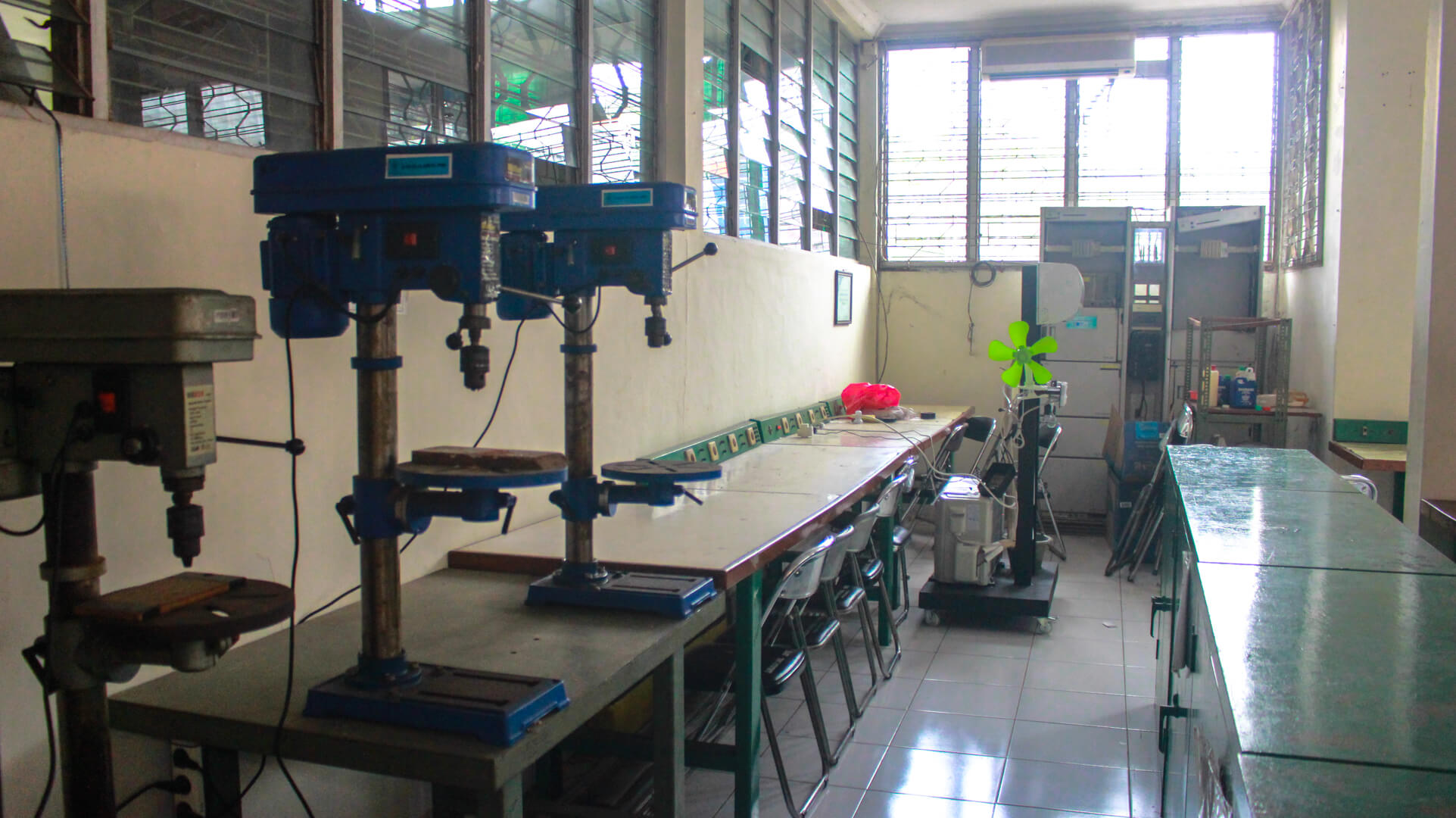Facilities and Infrastructure
The facilities and infrastructure owned by the Telecommunication Engineering Study Program include buildings, lecture halls, studios, laboratories and workshops.

High Frequency and Transmission Laboratory
Transmission laboratory activities aim to investigate the characteristics of transmission lines, digital transmission (PCM), digital multiplexing and fiber optics. High frequency activities are directed to investigate the characteristics of radio transitions such as transmitters, receivers and antennas.

Computer lab
The computer laboratory consists of two classrooms with a capacity of 26 and 32 computers respectively, to support the teaching and learning process of students and teaching staff, as well as for training industry practitioners. The material studied includes programming, DOS operating systems, Windows, NOS (network operating systems) as well as an introduction to the basics of LAN networks and Microsoft NT.

Digital and Microprocessor Laboratory
The Digital Laboratory is used to practice digital circuits, both TTL and CMOS, which are the basis of microcomputer system hardware. The microprocessor laboratory is used for assembly language programming practicum and microcomputer system interface techniques. This microprocessor laboratory is based on the microprocessor made by Intel, namely the mP 8085 and the micro controller (mC) of the MCS – 51 family.

Transmission Laboratory
This laboratory focuses on testing the characteristics of telecommunications industry equipment to determine the working principles and applications as well as the possibility of their development. The material provided is signal processing equipment which includes analog modulation systems (AM, FM, PM) and digital modulation (ASK, PSK, FSK).

Drawing and Design Laboratory
The drawing laboratory is equipped with 24 drawing tables, as a support for practicum in design, each student is given the basics of drawing techniques and the equipment used. By providing the basics of drawing techniques and manual design, students are expected to be able to convey their ideas quickly wherever they are.
